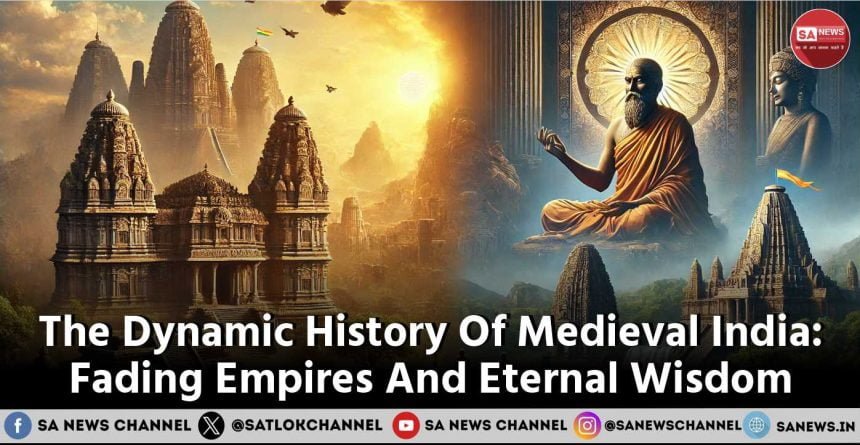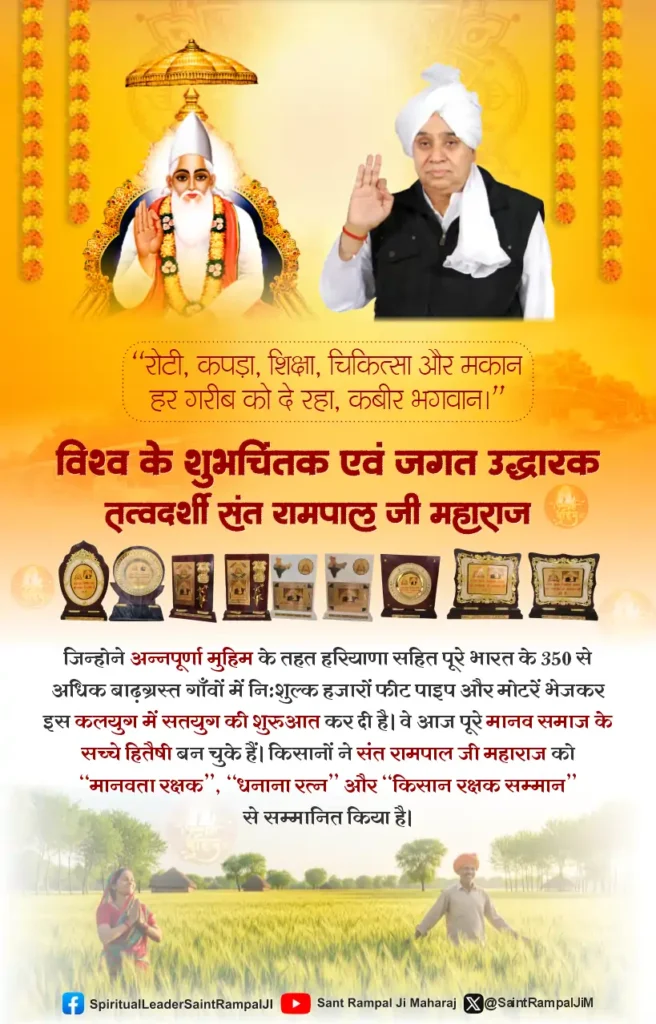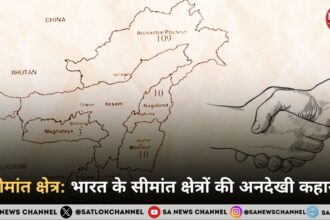The Medieval period of India was a time of profound transformation and significant historical developments. This era saw the spread of diverse religions and is celebrated for its rich tapestry of art and architecture. A critical aspect of this period was the rise and fall of powerful empires, which eventually crumbled like a house of cards. What do these fleeting power struggles reveal about the nature of authority and the impermanence of human ambition? This exploration seeks to uncover the answer behind these fleeting power struggles, also providing a brief overview into the complex and dynamic history of the Indian subcontinent.
- Highlights on Medieval India
- What is the exact timeline of The Medieval Period Of India?
- The Rise of Islamic Empires
- Medieval India: Regional Kingdoms and Their Contributions
- The Vijayanagara Empire (1300s-1600s)
- Medieval India: The Chalukya Dynasty (mid 500s-1000)
- The Chola Dynasty (800s-1200s)
- Medieval India: The Maratha Empire (1600s-1800s)
- The Emergence of Rajputs
- Cultural and Religious Syncretism
- Medieval History of India: Transitions
- Conclusion: The Quest For Eternal Truth
- Kabir Saheb: Sacred Poet Or Supreme Creator?
- FAQs on Medieval India
- Q. Who is the Father of Indian mediaeval history?
- Q. What was the religion in medieval India?
- Q. Which period is known as the medieval period of India?
- Connect With Us on the Following Social Media Platforms
Highlights on Medieval India
- A clear demarcation of the exact medieval period in Indian history does not exist. Based on the majority consensus, amidst the divided opinions, the medieval period is either stated as from 6th to 13th century, or 8th to 18th century AD.
- The medieval period saw the rise of many religions in India.
- There were several Islamic conquests in India, leading to the establishment of Islamic rulers in the conquered territories, especially the northern part of India.
- In southern India, the Chalukya dynasty ruled from 6th to 13th century. It is said that this period was the Golden Age for Karnataka as trade, art, literature flourished.
- The ‘Sangam literature’ developed during the Chola dynasty, from 9th to 13th century. The Chola dynasty ruled parts of south and southeast India for 5 centuries.
- There was a visible Arabic-Persian influence on Indian literature and words like ‘kissa’, ‘khoob’, ‘tareef’, to name a few, were inconspicuously adopted in day-to-day communication.
- The Maratha Empire successfully contributed in ending the Mughal rule in India, re-establishing Hindu rule in the country.
- The ‘Bhakti Movement’ was established during the medieval period. It lasted for almost 800 years, beginning in the 7th century.
- Kabir Saheb led the most unique form of the Bhakti movement in India, gaining 64 lakh disciples in an era devoid of communication media.
What is the exact timeline of The Medieval Period Of India?
Although the word ‘medieval’ also employs a derogatory connotation, in terms of historical divisions it stands for middle or an in-between period. The biggest question is which period is the exact middle period of Indian history? Most historians agree that there was a pre-historic age, followed by invasion by Aryans and then, the Vedic Age. The inconsistencies begin on where to end India’s ancient history and mark the beginning of the medieval period.
Medieval India: Historians disagree on the chronological boundaries and defining characteristics of this era. This ambiguity makes it difficult to define the exact timeline of the medieval period in India’s historiography. We will, however, cover some significant aspects of Indian history that most historians agree belong to the medieval period.
The Rise of Islamic Empires
Medieval India: Islamic invasions in the Indian subcontinent left a lasting impression on multiple fronts. Beginning with the establishment of the Delhi Sultanate, this era saw the introduction of Islamic governance and culture in the northern part of India. The subsequent rise of the Mughal Empire in the 1500s, further reshaped India’s political and cultural landscape. The architectural and administrative innovations seen during this period are a product of the amalgamation of Persian influences with local Indian traditions.
The Delhi Sultanate (1200s-1500s)
The medieval period in India saw the establishment of the Delhi Sultanate, founded by Qutb-ud-din Aibak in 1206. This Muslim kingdom marked a significant shift in Indian history, as it introduced Islamic rule in the northern part of the subcontinent. The Delhi Sultanate was characterised by its five dynasties: the Mamluk, Khalji, Tughlaq, Sayyid and Lodi.
■ Also Read: British Raj: India’s Transformative Journey from Colonial Rule to Independence
Medieval India: Each dynasty contributed uniquely to India’s political and cultural landscape. For instance, the Khalji dynasty under Alauddin Khalji (1296-1316) implemented extensive reforms, including market regulations and military innovations. The Tughlaq dynasty, particularly under Muhammad bin Tughlaq, is noted for its ambitious but often unsuccessful projects, such as the transfer of the capital from Delhi to Daulatabad.
Medieval India: The Mughal Empire (1500s-1800s)
The decline of the Delhi Sultanate paved the way for the rise of the Mughal Empire, founded by Babur in 1526 after his victory at the Battle of Panipat. The Mughals, of Turko-Mongol origin, brought with them a sophisticated administration and a syncretic culture that blended Persian and Indian traditions.
Babur’s successor, Emperor Akbar (1556-1605), is celebrated for his policy of religious tolerance and efforts to integrate various communities into the Mughal administration. His reign saw the flourishing of art, architecture, and literature, with the construction of iconic structures such as the Fatehpur Sikri and the Red Fort. Akbar’s grandson, Shah Jahan, is renowned for commissioning the Taj Mahal, a masterpiece of Mughal architecture and is perceived as a symbol of eternal love.
Medieval India: Regional Kingdoms and Their Contributions
Some of the other regional kingdoms that ruled over different parts of the nation are as follows:
The Vijayanagara Empire (1300s-1600s)
In southern India, the Vijayanagara Empire emerged as a significant power. Founded by Harihara and Bukka Raya, this empire reached its zenith under the rule of Krishnadevaraya (1509-1529). The Vijayanagara Empire was known for its strong administration, military prowess and cultural achievements.
The city of Vijayanagara, with its grand temples and bustling markets, was a centre of commerce and culture. The empire’s rulers patronised art and literature, leading to a renaissance in South Indian culture. The Hampi ruins, now a UNESCO World Heritage Site, stand testament to the architectural brilliance of this empire.
Medieval India: The Chalukya Dynasty (mid 500s-1000)
Medieval India: The Chalukya dynasty was a prominent power in southern and central India from the 6th to the 12th centuries. The dynasty comprised three main branches – the Badami Chalukyas, the Eastern Chalukyas and the Western Chalukyas. The Badami Chalukyas, under rulers like Pulakeshin II, expanded their influence across the Deccan plateau, leaving behind remarkable architectural legacies such as the rock-cut temples at Badami and the intricately carved monuments at Aihole and Pattadakal. The Western Chalukyas continued this tradition of architectural excellence, influencing later styles in the region. The Chalukyas played a crucial role in the cultural and political landscape of medieval India, fostering a vibrant period of artistic and scholarly activities.
The Chola Dynasty (800s-1200s)
The Chola dynasty, one of the longest-ruling dynasties in southern India, reached its peak between the 9th and 13th centuries. Under rulers like Rajaraja Chola I and his son Rajendra Chola I, the Chola Empire expanded its influence beyond the Indian subcontinent, establishing maritime dominance and conducting naval expeditions as far as Southeast Asia. The Cholas are renowned for their contributions to Tamil culture, literature and temple architecture.
The magnificent Brihadeeswarar Temple in Thanjavur, a UNESCO World Heritage Site, stands as a testament to their architectural and engineering prowess. The Chola administration was also notable for its highly organised and efficient governance, including the establishment of a well-structured bureaucracy and a sophisticated system of local self-government. The Chola dynasty’s emphasis on trade, culture, and administration played a pivotal role in shaping the history and culture of southern India.
Medieval India: The Maratha Empire (1600s-1800s)
The rise of the Maratha Empire was another significant development in medieval India. Founded by Chhatrapati Shivaji Maharaj in 1674, the Maratha Empire was instrumental in challenging Mughal dominance. Shivaji’s innovative military strategies and administrative reforms established a strong regional power that resisted Mughal expansion.
Under Shivaji’s successors, the Maratha Empire expanded significantly, covering much of western and central India. The empire played a crucial role in the eventual decline of the Mughal Empire and the fragmentation of northern India into smaller states.
The Emergence of Rajputs
The Rajputs, a warrior class known for their valour and chivalry, established several kingdoms across northern and western India during the medieval period. Rajput states like Mewar, Marwar and Jaipur became prominent centres of power and culture. The Rajput rulers, such as Rana Kumbha and Maharana Pratap, fiercely defended their kingdoms against foreign invasions, including those of the Delhi Sultanate and later the Mughals.
Medieval India: The Rajputs are celebrated for their contributions to Indian art and architecture, including the construction of magnificent forts like Chittorgarh and palaces like the City Palace in Udaipur. Despite frequent conflicts, the Rajput dynasties played a vital role in preserving Hindu culture and traditions during a time of great political and religious upheaval.
The Rajput states continued to hold significant power through the medieval period, facing challenges from the Delhi Sultanate, the Mughals, and later, colonial powers. The influence of the Rajput states declined gradually with the rise of the Mughal Empire and the British East India Company’s expansion in the 18th and 19th centuries.
Cultural and Religious Syncretism
The Medieval History in India is characterised by richness in cultural and religious diversity. We will explore them one by one:
Art and Architecture
Medieval India witnessed a rich cultural exchange due to the interplay of different empires and traditions. The architecture of this period reflects a fusion of various styles. Mughal architecture, for instance, combined Persian elements with Indian designs, resulting in magnificent structures like the Taj Mahal and the Red Fort.
In South India, Dravidian architecture reached its pinnacle with the construction of grand temples characterised by towering gopurams (gateway towers) and intricate sculptures. The Vijayanagara temples and the Brihadeeswarar Temple in Thanjavur are prime examples of this architectural splendour.
Medieval India: Religious Syncretism
The medieval period was also marked by significant religious developments. The spread of Islam led to the emergence of new cultural and religious practices. Sufi saints, who emphasised a mystical approach to Islam, played a vital role in spreading the religion and fostering communal harmony.
Medieval India: Hinduism also experienced transformations during this period. The Bhakti movement, which emphasised personal devotion to deities and the rejection of ritualistic practices, gained prominence. In actuality, the Bhakti movement was pioneered by Kabir Saheb upon His arrival in Kashi, Varanasi. Although Kabir Saheb was considered as a Saint or a Sacred Poet, in actual He was indeed Supreme God Who contributed significantly to this movement as He preached about true worship amongst all the odds, promoting religious tolerance and social reform.
Medieval History of India: Transitions
The Medieval History of India witnessed numerous transitions, some of the major are listed below:
Decline of the Mughal Empire
The Mughal Empire, which had dominated much of India for centuries, began to decline in the 18th century. The weakening of central authority, coupled with external invasions and internal strife, led to the fragmentation of Mughal rule. The rise of regional powers, such as the Marathas and Sikhs, further eroded Mughal dominance.
Medieval India: Colonial Encroachment
The decline of the Mughal Empire set the stage for British colonial expansion. The British East India Company, having established a foothold in India through trade, began to exert political control. The Battle of Plassey in 1757 marked a turning point, leading to increased British influence and eventual colonisation.
Conclusion: The Quest For Eternal Truth
The medieval period in India was a time of dynamic change, marked by the rise and fall of empires, cultural flourishing, and religious transformation. The rise and fall of empires are enormous indicators of the fleeting power struggles and the impermanence of human ambition. But is the annexation of power and the establishment of superiority the ultimate aim of human life? A power that lasts only as long as you live or your kingdom endures?
Kabir Saheb enlightened us with the real purpose of human life – Salvation. He taught us that true fulfilment lies not in temporal power or material wealth but in spiritual awakening and liberation from the cycle of birth and death. Understanding His breakthrough teachings encourages us to look beyond the over-glorified transient nature of earthly ambitions and strive for the true purpose of our human life.
Kabir Saheb: Sacred Poet Or Supreme Creator?
Almost every bhajan and bhakti geet in India includes Kabir Saheb’s phenomenal sermons. People are also tempted to use them in speeches or while addressing important gatherings. What is it that is so attractive about His words? Are they just words, or much more than that?
Kabir Saheb, popularly known as Sant Kabir, is the Supreme God Kabir who has been glorified and identified as our Creator in the holy scriptures of most religions. His real name is Kavir Dev.
Atharvaved, Kand 4, Anuvaak no. 1, Mantra 7:
YoatharvanM PitraM DevbhandhuM BrahspatiM namsaav ch gachchhaat
TvaM vishweshaM janita yathaasH KavirDevo na dabhaayat swadhavan ||7||
Translation: He, who is unchanging, that is, eternal; Father of the universe; the real companion of the devotees, that is, the basis of the soul; Guru of the universe, and who takes a polite worshipper, that is, a worshipper who worships according to the injunctions of scriptures, who has gone to Satlok, to Satlok with safety; the Creator of all the brahmands, Jagdamba, that is, who is also endowed with the qualities of a mother, who has the nature, that is, qualities of not betraying like Kaal, He is, as it is, Himself KavirDev, that is, in a different language He is also called Supreme God Kabir.
He manifested in Kalyug, in 1398, in Varanasi and played the role of a poet. Using poetry as His medium, He encapsulated powerful teachings in various formats, most popular being His Dohas or ‘Kabir ke Dohe’.
Yajurved, Adhyay 29, Mantra 25:
Samiddhoadhya manusho durone devo devanyajasi jaatvedH||
Aa ch vah mitrmahshchikitvaantvaM dootH Kavirasi prchetaH ||25||
Translation: Today i.e. in the present time, the fire, i.e. the harmful way of worship opposite to the scriptures, set wickedly to the body-like palace of the thoughtful persons engrossed in the wrong way of worship, in its place, is the real way of worship of the God of gods, Supreme God SatPurush.
The kind Supreme God who is the real friend of a living being and who in the form of a messenger brings and imparts His healthy/sound knowledge i.e. the true bhakti, is Himself KavirDev i.e. is Supreme God Kabir.
Rigved, Mandal 9, Sukt 96, Mantra 17:
Shishum jagyaanm hry tam mrjanti shumbhanti vahin marutH ganen||
Kavirgeerbhi kavyena Kavir sant somH pavitrm atyeti rebhan||17||
Translation: Supreme God intentionally appears in the form of an extraordinary human child and at that time utters His Tatvgyan / True knowl- edge with purity. For the group of devotees blazing in the fire of separation for the attainment of God, He recites many speeches through poems with poetic insight by calling out loudly through Kavir Vaani i.e. Kabir Vaani. That Eternal Purush/God i.e SatPurush alone in the form of a saint i.e. a Rishi is Himself KavirDev. But because of not recognising that God, people start calling Him a Kavi (poet). But He is Supreme God only. His actual name is KavirDev.
However, in this Kalyug, Jagatguru Tatvadarshi Sant Rampal Ji Maharaj is the chosen messenger of Supreme God Kabir and is the sole authority to impart His sacred and unparalleled spiritual knowledge. The countless miracles experienced by His disciples and protection from miseries are a testimony to the power of the revolutionary bhakti bestowed by Sant Rampal Ji Maharaj.
To know more about the unrivalled spiritual knowledge of Sant Rampal Ji Maharaj, visit:
- Website: www.jagatgururampalji.org
- YouTube: Sant Rampal Ji Maharaj
- Facebook: Spiritual Leader Saint Rampal Ji Maharaj
- Twitter: @SaintRampalJiM
FAQs on Medieval India
Q. Who is the Father of Indian mediaeval history?
Answer: Greek historian Megasthenes is known as the Father of Indian medieval history.
Q. What was the religion in medieval India?
Answer: There were many religions – Islam, Jainism, Buddhism, in addition to Hinduism.
Q. Which period is known as the medieval period of India?
Answer: This is a debated topic, but most historians agree that the Islamic invasion, subsequent rise of various Indian kingdoms and finally, the decline of the Moghul empire are important markers in this period.









